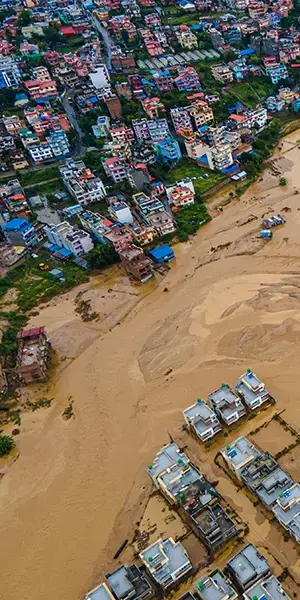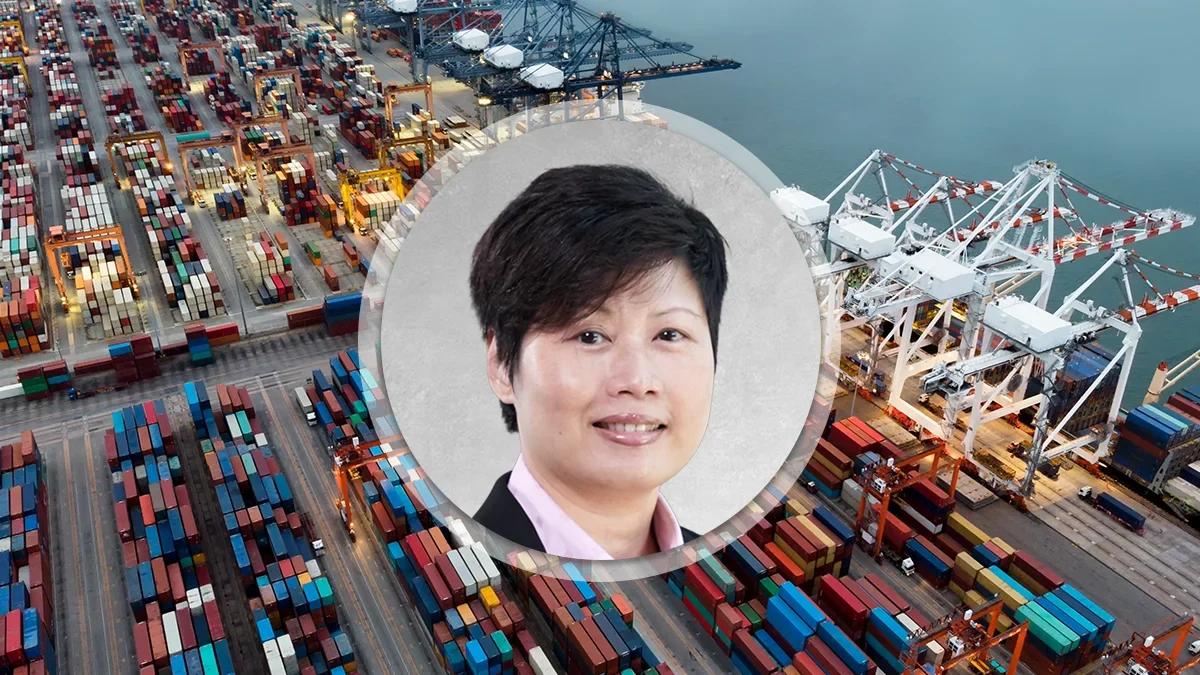(Re)in Summary
• Rising costs from climate and insurability pressures are widening the protection gap, with more firms and individuals turning to self-insurance and captives.
• Alternative risk transfer solutions, including insurance-linked securities and parametric products, are growing but face scaling challenges.
• At SIRC 2025, Insurers are urged to play a bigger role in blended finance, risk advisory, and public-private partnerships to address gaps in sustainable development and agricultural cover.
• Mitigation and nature-based solutions were also key themes at the conference, with (re)insurers exploring ways to support biodiversity, reduce systemic risks, and build resilience.
As sustainability and insurability pressures push up costs, insurers will find it harder to narrow protection gaps, warned panellists at the Singapore International Reinsurance Conference on 4 Nov.
Corporations are starting to find insuring systemic climate risks more difficult, leading to a growth in captives and self-insurance, said Daniel Fairweather, divisional director, food systems and biodiversity at Howden, during a panel on sustainability in insurance at the conference.
Smaller insureds are also looking to take on risks by themselves in life, health, and cyber, said Joan Collar, chief commercial officer at Marsh McLennan Asia, at a separate panel on geoeconomic fragmentation. “I do see a number of our clients saying, I’m going to take on that risk myself,” Collar said. “And so we’re starting to see that coming into play.”
On top of climate change risks, cyber risks, legal liabilities and affordability issues, the growth of global multinationals who have become “so large that they can self-insure” has also been driving the protection gap, said Lloyd’s chief Patrick Tiernan during his keynote. “We need to make sure that we drag them into our ecosystem of risk expertise.”
With cost pressures and less available money to spend, the protection gap is going to widen, said Robert Kosova, chief executive officer and executive director at QBE. “If there’s further constraint on that, the protection gap will just grow,” Kosova said.
These pressures — from climate-related risks to rising inflation from economic volatility and shrinking risk appetites by carriers — have led to a growth in captives, regional risk pools and mutualised risk pools, said Fairweather.
“We’ve always assumed, when we talk about the protection gap, that it’s about the underinsured or the uninsured.”
But people do see the risks. “We see governments and communities realising belatedly that there’s a real requirement and need to buy insurance, and this is a time when potentially insurance is getting less and less available or more and more expensive,” Fairweather said. “There’s a real opportunity for the insurance sector to really help those most at risk of climate change,”
Traditional insurance structures are being revisited and redeveloped in some areas where this insurance gap exists, and insurance players can help their customers think about how to approach the underlying vulnerabilities, Fairweather added.
“As brokers, that’s one of our real values to clients,” he said. “How do we enable them to assess what risks they have, and what can they do to reduce expected risk to a point where it’s efficient and (where) it makes sense to transfer it to the insurance market?”
The protection gap should not be looked at in isolation in terms of risks, said Dickson Wong, director of the Global Asia Insurance Partnership. “All these risks are interlinked,” Wong said. “For example, we have an earthquake, and a lot of focus is on the destruction of infrastructure. (But) there’s also a health protection gap that’s impacted, there’s also the mortality protection gap as well,” he said.
Looking beyond risk management to risk mitigation will be key. “As reinsurers, we’re very focused on the insurance part,” Wong said.
The industry will have to look at future trends and emerging value chains to protect clients from emerging risks, said Henri Douche, head of product and innovation at reinsurer SCOR.
If ignored, future value chains might create new protection gaps, Douche warned. “We shouldn’t forget that we will see in the future new value chains emerging, and if we cannot as an industry anticipate these changes and this emergence of a new value chain, we will create new protection gaps.”
Alternatives taking centre stage
Alternative risk transfer solutions — from insurance-linked securities (ILS) to parametric insurance — have been central to many discussions around closing the protection gap and building (re)insurer capacity across SIRC’s panels.
Reinsurers were urged to work with alternative asset managers to develop creative structural solutions to meet the risks of the future by Townsend in Tuesday’s opening speech, as alternative capital will continue to pose a challenge to the industry.
“Alternative capital will continue to pose a significant challenge to the reinsurance industry, given their clout, their willingness to absorb new financial risks, and their overall approach,” Townsend said. “So it’s very much a force to be reckoned with going forward.”
Beyond ILS and cat bonds, parametric products have also grown in interest, particularly in the sustainability space. From cargo delay to earthquakes to agricultural resilience, parametric insurance has played a key role in closing the protection gap across Asia.
But the challenge remains in scaling and structuring these solutions beyond the pilot. “If in the design of the pilot you don’t plan to scale up, and the methodology you’re going to implement is blocked after year one. Well, you need to do another pilot,” said Douche.
A lot of the work around parametric is now about how to scale them, adapting them to market while in keeping to regulatory compliance — moving them beyond the pilot, Wong added. “There’s a lot of different aspects that we’re looking at the moment.”
Even at scale, however, some of the alternative solutions — like the Caribbean Catastrophe Risk Insurance Facility (CCRIF) risk pool, which paid out a record US$70.8 million to Jamaica in the wake of Hurricane Melissa — might not be big enough.
“You can see the utility in some of these instruments,” said Fairweather. But insurers will need to work on getting real aggregate exposure limits that are meaningful for nat cat protection, Fairweather pointed out. “That’s a big question, and something we need to try and work on.”
Insurers should also play a bigger role in blended finance — using development finance and philanthropy to mobilise private capital to emerging markets to address sustainable development — by providing risk mitigation tools and stepping into a risk advisory role, said Wong.
To that end, the Global Asia Insurance Partnership is working with software firm Convergence to develop a practical playbook to guide insurers in how they can engage in blended finance, Wong said, so risk advisors, underwriters and investors can bring in their risk management expertise. “I think playing a risk advisory role, even before thinking about the blended solution, can really have a big impact on the whole ecosystem.”
Insurers can also provide support and capacity in public-private partnerships to help build crop cover, says Sasa Hu, Head of Agriculture and Chief Underwriting Officer for P&C in APAC at PartnerRe.
“If a farmer has no insurance, they face all the catastrophic risks themselves — but multi-peril crop insurance is very expensive (and is) not usually affordable by any single farmer,” Hu said.
PartnerRe is working with countries that don’t have public-private partnerships to develop similar schemes, as it helps governments turn unstable post-catastrophe compensation into reasonable budgets, Hu said. “When there’s more capacity available, then we can close the gap and provide better cover for more farmers.”
Mitigation
Mitigation was also a common word heard throughout the conference, as (re)insurance experts discussed ways to mitigate risks and minimise losses and vulnerabilities and how (re)insurers fit into the process.
(Re)insurers can actively work on insuring investments in nature-based risk reduction solutions and biodiversity protection in order to mitigate the systemic risks climate change might bring — and close the biodiversity funding gap for nature-based solutions.
SCOR launched its NatReCo Initiative to offer clients (re)insurance solutions around nature-based biodiversity projects in June this year, initially focused on projects that assist in biodiversity and ecosystem recovery.
“Investing without any safety net and insurance is not super fun for a bank or for an investor,” Douche said. “So we decided to give it a try.”
(Re)insurers have a role in de-risking, Douche said. “But it’s not enough — we have a role, and we have a responsibility. The role is to de-risk. The responsibility is to choose what we want to de-risk.”
Significant portions of the world’s GDP are dependent on nature and biodiversity, but they are completely absent from balance sheets, underwriting and valuation. “We tend to focus on companies’ impacts on nature and biodiversity,” said Fairweather. “What we tend not to dwell on, which we should do far more, is the dependencies of companies on nature and biodiversity. We value nature as a resource, not as an asset.”
Sustainability has to be brought into risk management, Fairweather said. “I think that’s going to be crucial in terms of how we really start to really deliver a more resilient future for ourselves.”

























